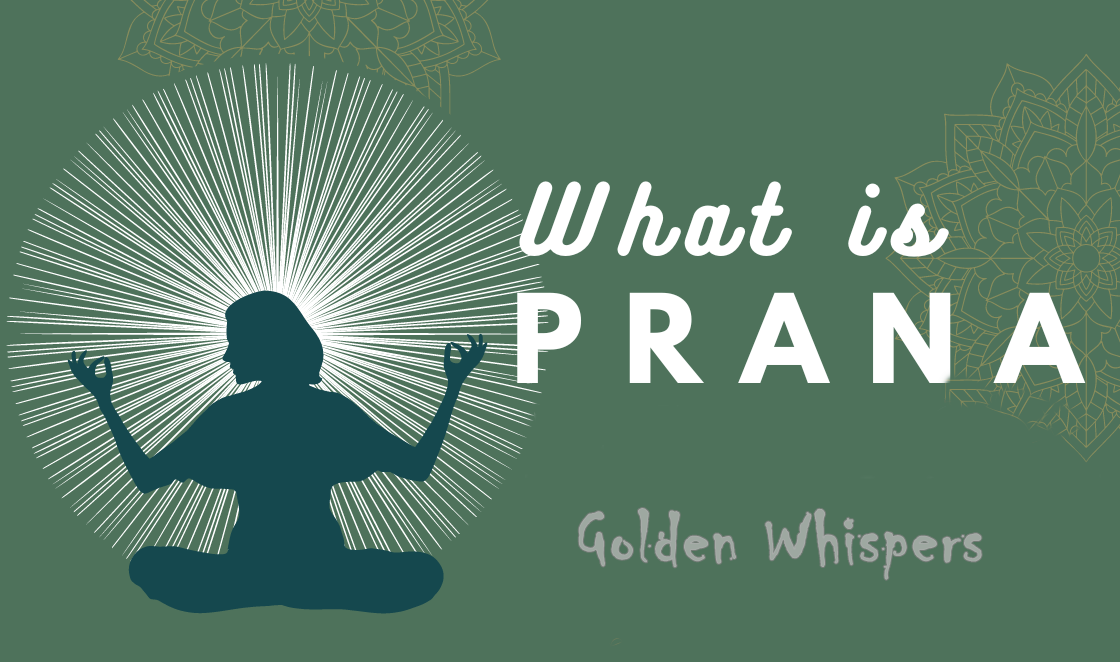The early Upanisadic period, around the eighth and seventh century BCE, provides us with the first attempts to define the role of prana in religion, consciousness, and meditation. It was a magnificent time for really complicated cosmology and subtle texts alluding cautiously to ritual practices and meditations with hardly a clear word among them. What is lacking in conciseness, however, was made up by repetition of lines and by creative interpretation expected from students and sages. After all, the prime function of an obscure text is to make you think for yourself. At this early age, präna had become a central concept of philosophy and life. The idea of präna goes a long way beyond ‘breath’ or ‘life energy. The präna of the Upanisads is also the force behind the senses, as I’m sure you already guessed, happen to be deities. It is präna which gives life to the senses, and these in turn make body and intelligence possible. A bit of practical experience with various breathing techniques will soon reveal that breathing does indeed alter sensual perception. The senses, however, do not entirely correspond to the five senses that Aristotle defined. Some flexible thinking is required here. As you are by now hopefully delighting in breathing exercises every day I would like to add some of the fascinating ideas that may get you beyond the realms of mere breathing and vitality into magickal and philosophical spaces really worth exploring. Let me sum up some ideas from the Kausitaki Upanisad.
The breathing spirit is Brahmä. Brahma’s messenger is the mind, the protector is the eye, the ear is the announcer, and speech is the keeper of the house. It is possible to become obsessed by any of these. The breathing spirit, Brahmä, receives offerings from his servants, the deities mind, eye, ear, and speech, though he never begs for them, thus, the prime lesson is ‘Do not beg’ for there are always those good enough to give without being asked. The divinities come in a certain order, which leads gradually to refinement. First comes speech, behind speech the eye, behind the eye the ear, and behind the ear the mind and behind the mind the breath (prana). The text gives a multipurpose rite to obtain results: the highest treasure can be obtained in the night of a full or new moon or in any night of the bright fortnight provided there is an auspicious constellation. The ritualist sweeps the ground, strews sacred grass, sprinkles water, builds a fire, and bends a knee while offering oblations of (melted butter), saying : ‘The divinity named speech is the attainer. May it obtain this for me from him. Hail to it.’ These lines are repeated inserting the names ‘breath’, ‘eye’, ‘ear’, ‘mind’ and finally ‘wisdom’. Then the ritualist smears the limbs with the ointment of melted butter, inhales the smoke, declare the wish, and goes forth in silence. As you can see the order of the divinities does not agree with their earlier appearance, can you detect or invent a reason? The same ritual is used to become dear to any woman or man. The phrase to repeat is: ‘ Your speech I sacrifice in me, hail to you.’ Speech is replaced by breath in the next repetition and so on. Then one only has to stand close to the person, preferably from windward, and success is ensured. Our text goes on to explain that when you speak, you cannot breathe (properly), thus you are sacrificing breath. When you breathe (properly) you are unable to speak, this means sacrificing speech.
One or the other are always being sacrificed at any moment of your life, they are the unending immortal oblations which are always offered, whether you are waking or sleeping. Unlike other sacrifices, which have a beginning and ending, these two are continuous. Brahman, we learn, lives when the fire burns and dies when it is extinguished, then its light goes to the sun, and its breath to the vital breath. The same goes for the sun, which returns its light to the moon, the moon dies and its light goes to lightning, and the light of lightning, in its dying, returns to the regions of space. Though all this speaks of Brahman’s dying, all these things do not really die when they enter the vital wind, but come forth again. Next, Brahman shines forth when one speaks, when one speaks not, Brahman dies and its light goes to the eye and its vital breath to the wind. When the eye sees, Brahman shines forth, but dies when one sees not, thus the light of the eye returns to the ear and its vital breath to the wind. Hearing makes Brahman shine forth, not-hearing makes the light go to the mind and its vital breath to the wind. Brahman thrives when the mind is thinking but dies when thought ceases and its light goes to the vital breath, like its vital breath goes to the vital breath. And though they all die in the process, they are not really dead but come forth again. Confused? This is clearly a process of meditation, there is a progression towards simplicity until consciousness returns to the non-defined vital breath. The next discipline is a little obscure. If I interpret it properly, it has the ritualist lying un-breathing like a rotten log of wood. A process akin to astral projection (travelling in the imagination) seems to be implied: First, breath disappeared (or seemed to, a case of minimal breathing) from body, next mind went, then the ear, the eye, and finally speech. This is the pattem of dissolution, it resembles the process of death. In its reversed form the text tells us how to come to life again: first, speech enters into body, and body lies speaking with speech (hypnotic suggestion?). Next the eye comes along, and body speaks and sees. Then follows the ear, body sees, and hears. Mind follows, so body speaks, sees, hears, and thinks. Finally, the vital breath comes in and body arises at once. In between the two phases comes the actual journey:
All the divinities, verily, having recognised the superior excellence of the vital breath, having comprehended the vital breath alone as the seat of intelligence, went forth from this body, all these together. They, having entered into the air, having the nature of space went to the heavenly world. The sage who knows this can travel on the vital breath. He goes to the place where the gods are. Having reached that, he who knows this becomes immortal as the gods are immortal.
Another rite follows during which the dying or seriously disabled father invests his son with speech, vital breath, eye, ear, food, pleasure, pain, wisdom, mind, and a lot of other blessings to transmit the tradition. Should death ensue, a good funeral is assured, if not the father has to live under the authority of the son or leave the house to become a wandering ascetic. No doubt this rite was only performed when death was really inminent. To confuse things a little, the next sections disagrees with the beginning by telling us that it is Indra, not Brahman, who is actually the breathing spirit. This can only come as a surprise to those who believe in specific gods with sharply defined functions, anybody acquainted with Indian thought will only give a brief sigh and read on. Indra said:
I am the breathing spirit, meditate on me as the intelligent self, as life, as immortality. Life is breath and breath is life.. with the breathing spirit one obtains immortality in this world, by intelligence true conception… the vital breaths, verily, go into a oneness, (otherwise) no one would be able, at once, to make known a name by speech, aform by the eye, a sound by the ear, a thought by the mind… while speech speaks, all the vital breaths speak after it. While the eye sees all, the vital breaths see after it. While the ear hears, all the vital breaths hear after it.
When the breath breathes, all the vital breaths breathe after it. This doctrine is developed at some length and I am sure you are happy to read it for yourself. Suffice it to say that speech produces all names, breath all odours, the eye all forms, the ear all sounds, and the mind all thoughts. These constitute the totality of experience, and the driving sentience and force between these divinities of the senses is präna, vital breath. The Chändogya Upanishad expands this scope of concepts by aligning the breaths with the directions. At the time, the concept of the heart as a hollow space within the centre, seat of the soul, was well developed. The heart has five openings for the gods: In the east is the up-breath (präna), the eye and the sun, which should be meditated upon as glow and health. In the south is the diffused breath (vyäna), the ear and the moon, meditate on them as prosperity and fame. In the west is the downward breath (apäna), speech and fire, meditate on them as the lustre of sacred wisdom and health. In the north there is equalised breath (samäna), the mind and rain, meditate on them as fame and beauty. Above is the out-breath (udana), air and space. Meditate on them as strength and greatness. These are known as the Five Brahma-persons, the doorkeepers of the world of heaven. By meditating on the five, their qualities are attained. And so they should be. Even reading such complicated stuff should improve your karman.

